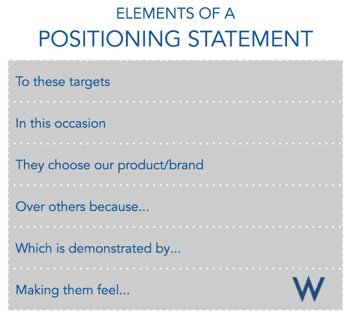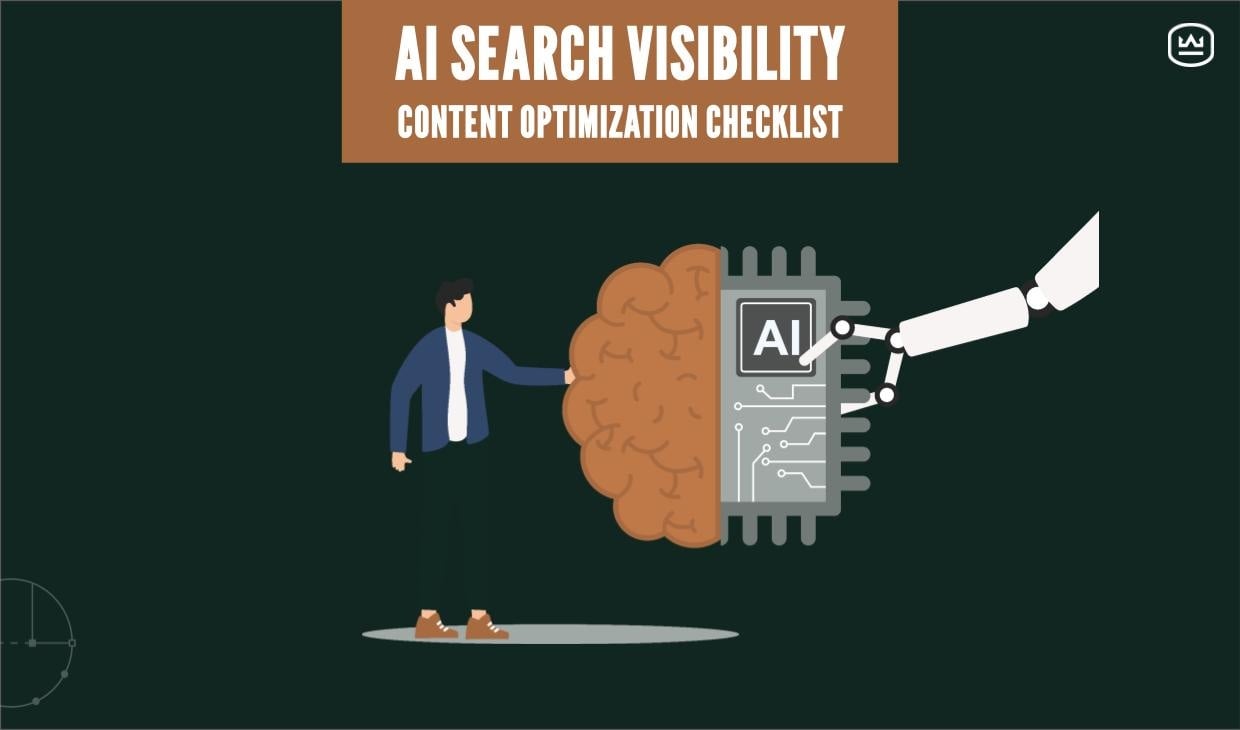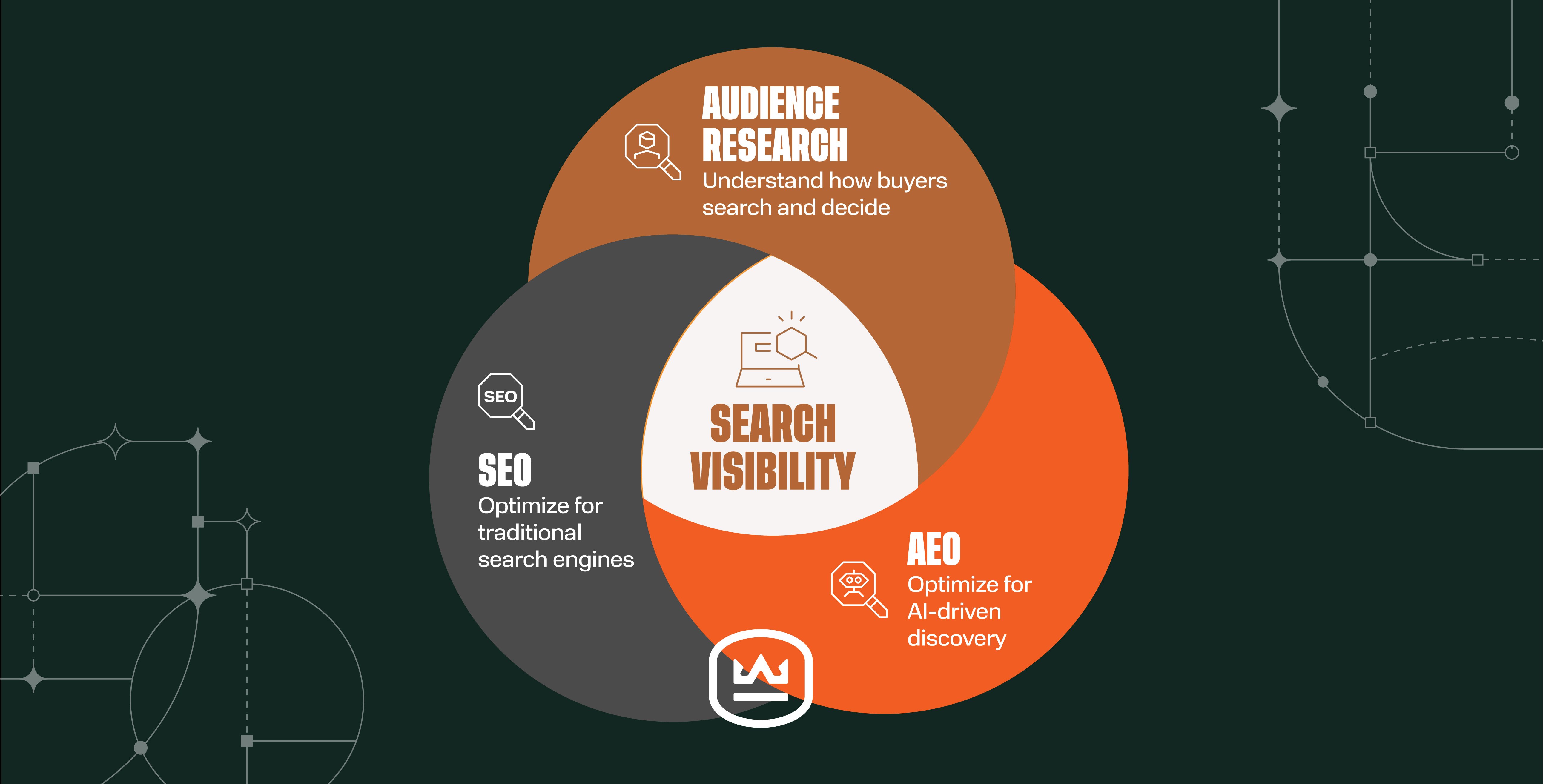How to Craft a Marketing Positioning Statement for B2B Industrial Brands
Written by
No one wants to waste time learning about products or services that aren’t right for them. Business-to-business buyers invest valuable time on their buyer’s journey as they research and vet their options. Sales reps dedicate significant time and effort to connect and communicate on sales calls.
Getting straight to the point of who you are and what you do saves valuable time: yours, your customers’, as well as those prospects who aren’t a great fit and the sales reps trying to close deals. That’s why a positioning statement is fundamental to your B2B marketing strategy.
A clear and concise industrial marketing positioning statement answers the most important questions upfront and serves as a foundation for a marketing strategy that attracts, engages, and delights your target audiences.
Successful messaging, content, and promotion strategies all depend on positioning to:
- Clarify your target personas
- Frame your product or service’s benefits to them in a way that shows you understand their challenges and pain points
- Affirm your value with evidence — such as data and testimonials
Helpful content that’s crafted to support a clear positioning statement can help attract high-quality traffic to your site, earn greater credibility with search engines, and deliver better value to prospects who become high-quality sales leads with great potential to grow into long-term customers.

What is a Marketing Positioning Statement and Why is it Important for Inbound Success?
“Positioning” implies a sense of place — where your products or services stand with respect to the market, your competitors, and the customers whose needs you aim to meet. What are your strengths? Are you the most reliable? Most accurate? Most durable?
Think of Bounty paper towels and their “quicker picker-upper” positioning. They’re probably not the cheapest on the shelf, but they don’t market themselves that way. They understand why their target consumers will want to choose their product over other options, and they put their positioning to work in their messaging.
The same concept applies to industrial companies, too. Getting your positioning right is how you and your best prospects get to clarity faster. So take the time and effort to articulate your unique, specific value proposition — and then use your positioning to inform every aspect of your marketing efforts, from strategy to tactical execution.
But keep in mind, a marketing positioning statement isn’t just a catchy slogan or ad copy. An effective positioning statement defines your ideal customer, pinpoints what you will represent or mean to them, and supports that claim with facts.
Any business with a value proposition and a target market can use the following approach, but our marketing positioning statement example will focus on complex B2B industrials and manufacturers — where our team has an exceptionally strong background and experience.
Keys for Understanding Your True Value Proposition
Your first job in the process is to uncover the core truths about your company’s competitive advantage, and just why it’s successful. Why do your prospects choose you over all the alternatives, and why do customers keep you as a partner?
Internal Interviews
Interview teammates who work most closely with customers: technical sales engineers or other sales staff, customer service representatives, anyone who’s responsible for helping customers have a positive experience with your products or services. Find out why they think customers want to work with them.
You could ask, "What are our strengths as a company?" But our experience tells us that about 80% of the time, you’ll get answers about “our people” or “quality.” Like moms and apple pie, these are clichés for a reason. They’re sort of true, but don’t get you any closer to what makes your value prop unique.
Because the positioning statement is so integral to effective marketing, we help clients work through the process — and this is the approach we take with internal client interviews. If we get generalizations and platitudes, we keep asking questions. We want to know specifically, what leads their key customers to make the decision to spend money on their solutions? Here’s what we work to discover:
- What were the difference makers as the decision was considered?
- How did customers evaluate your company pre-purchase?
- What aspects of your product or service were they most satisfied with, and why? What words did they use to describe how they felt?
- What aspects of doing business with you pleasantly surprised customers?
- What would they tell a friend or trusted colleague about you?
Questions like this help everyone think more specifically about the distinct — and distinctive — ingredients of your success. And that’s where the best insights come from.
We often find salespeople are a great source of insights about our clients’ strongest value propositions. To help them uncover these insights, we ask about the specific customer needs they discover (and learn to look for) that instantly tell them a prospect is a perfect fit for their products or services.
Customer Interviews
Next, we take what we learned from internal people and target a few (usually 6 to 8) of the most important customers for interviews. We custom-craft discussion guides for these interviews to get candid learning and insights from customers’ perspectives across a range of key topics including:
- What triggers the start of a buyer’s journey, and what the process looks like
- How they evaluated the options that might address their pain or help them meet an opportunity
- Why they chose our client as their vendor-partner
- How they evaluated their choice, post-purchase
- What factors keep them a loyal customer
- What they’d tell friends if recommending our client
- What the company could improve to become an even better partner
In our experience, one-on-one interviews with customers are the best way to get true voice-of-customer insights.
As an added bonus, around 75% of the interviews result in value-affirming customer testimonials clients can use in their marketing.
You’ll be hard-pressed to find a more compelling message for prospects than an authentic testimonial from a customer whose story looks and sounds like theirs to establish credibility, relevance, and value.
RELATED: 5 Tips for Building a Better Manufacturing Sales Proposal
How to Craft an Effective Positioning Statement
The learnings and insights from both sets of interviews serve as your ingredients for the next step in your process: the crafting. As you start this step, think of your positioning statement as a direct message to your prospects that tells them in an instant what you’re all about.
What’s included in a strong positioning statement?
Your positioning statement needs to answer these questions:
- Who’s your most important target? Focusing on your best customers allows you to concentrate on being the most relevant to your best targets.
- What’s your frame of reference? Do you compete with companies that make similar products or services? Are you competing as a progressive or innovative alternative? Choose your frame of reference to help illustrate the net benefits you can deliver that your competitors can’t or don’t.
- What’s your primary promise? When you write this, express it as a benefit to your target. Achieving relevance starts by highlighting the meaningful intersections between your best target’s pain points and your demonstrated points of competitive advantage gives you relevance.
- Where’s your proof? Validate your promise with evidence. Here’s where case studies, white papers, third-party testimonials and reviews, customer ROI analysis, and real data come into play.
Process Example: Positioning Statement for an Industrial Manufacturer
Remember the ingredients:
- Identify your best customers and use their details to inform your most important targets:
- “To [it’s helpful to start with a Standard Industrial Classification code]”
- Articulate your promise to those prospects in terms of what your product or service will mean to them:
- “Our product will …”
- Support that claim with proof of value
- “Based on [results-based data or evidence]”
- “Our product will …”
Let’s look at an example of a positioning statement for a hypothetical B2B industrial manufacturer that makes conveyor systems for paper products:
“To tissue manufacturers looking for conveyor equipment that increases throughput and integrates easily with existing equipment, XYZ product will be the conveyor solution that’s most customizable and designed to be the easiest to connect with existing systems; the evidence is our extensive breadth of engineering capabilities and successful integrations with more than [number of] different system types.”
A strong, well-reasoned positioning statement will help you determine the topics you’ll include in marketing content, and the types of messages that should be part of your content marketing strategy. Convening your content team around an intentionally crafted and disciplined positioning statement makes it easier to see where to concentrate your effort.
Understanding your prospects and customers — and showing what you know — is a vital part of aligning your Sales and Marketing efforts to ensure no effort or investment is misdirected toward leads that aren’t really prospects.
Achieving alignment between Sales and Marketing takes trust, and a service level agreement, or SLA, helps set a foundation for building and maintaining the relationship between teams. By clearly defining expectations, roles, responsibilities, and the ways leads are qualified for a sales handoff, an SLA helps align goals and hold departments accountable to one another.
Our guided tour of an SLA explains it all in the depth you need to develop your own. Click the link below to get started today.
Subscribe To Our Blog
Information. Insights. Ideas. Get notified every time a new Weidert Group blog article is published – subscribe now!
You May Also Like...

Search Engine Optimization
The New Search Visibility Checklist for AI-Era Content Marketing

Search Engine Optimization
SEO Isn’t Dead. It’s Evolving: How B2Bs Can Stay Visible in the Age of AI

Search Engine Optimization
Zero-Click Search and the New Reality: Navigating Changes in Buyer Behavior
Accelerate Your Growth with
Weidert Group
If you’re ready to explore a partnership, request a personalized consultation with our team.

